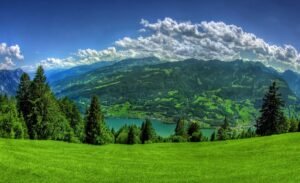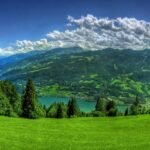Crust tainies represent a pivotal concept in understanding Earth’s dynamic structure. These intriguing formations play a crucial role in shaping the planet’s surface and influencing geological activities. By delving into the nature of crust tainies, we can gain deeper insights into the processes that drive tectonic movements and contribute to natural phenomena such as earthquakes and volcanic eruptions. This blog post aims to explore the multifaceted aspects of crust tainies, shedding light on their formation, significance, and the ongoing research that continues to unveil their complexities.
The Formation of Crust Tainies
The formation of crust tainies is a result of intricate geological processes occurring deep within the Earth’s mantle. As tectonic plates interact, the stresses and pressures lead to the creation of crust tainies, which manifest as wave-like patterns in the Earth’s crust. These formations are influenced by factors such as temperature variations, material composition, and the rate of plate movements. Understanding the formation of crust tainies provides valuable information about the Earth’s internal dynamics and helps scientists predict potential geological events.
Types of Crust Tainies
Crust tainies can be categorized into several types based on their characteristics and formation mechanisms. Primary types include divergent crust tainies, which form at mid-ocean ridges where tectonic plates are moving apart, and convergent crust tainies, which develop at subduction zones where plates collide and one is forced beneath the other. Additionally, transform crust tainies occur where plates slide past each other horizontally. Each type of crust tainies exhibits unique features and behaviors, contributing to the diverse geological landscape of our planet.
The Role of Crust Tainies in Plate Tectonics
Crust tainies are integral to the theory of plate tectonics, serving as markers of the interactions between the Earth’s lithospheric plates. They provide evidence of the movements and forces at play beneath the surface, helping geologists understand the mechanics behind plate shifts and collisions. The study of crust tainies aids in mapping plate boundaries, predicting seismic activity, and comprehending the long-term evolution of the Earth’s surface. Without crust tainies, our grasp of plate tectonics would be significantly limited.
Impact of Crust Tainies on Natural Disasters
Crust tainies are closely linked to the occurrence of natural disasters such as earthquakes and volcanic eruptions. The buildup of stress along crust tainies can lead to sudden releases of energy, resulting in seismic events. Similarly, the movement along crust tainies can facilitate the ascent of magma, triggering volcanic activity. By monitoring crust tainies, scientists can better predict and prepare for these natural disasters, potentially mitigating their impact on human populations and infrastructure.
Crust Tainies and Mineral Resources
The presence of crust tainies is often associated with the concentration of valuable mineral resources. The geological processes that form crust tainies can lead to the deposition of minerals such as gold, silver, and copper. These areas become prime targets for mining operations, as the unique conditions around crust tainies create favorable environments for mineral accumulation. Understanding the relationship between crust tainies and mineral deposits is essential for efficient resource exploration and sustainable mining practices.
Technological Advances in Studying Crust Tainies
Advancements in technology have significantly enhanced our ability to study crust tainies in detail. Techniques such as seismic tomography, satellite imaging, and computer modeling allow scientists to visualize and analyze crust tainies with unprecedented precision. These technologies enable the mapping of crust tainies on a global scale, facilitating comparative studies and improving our understanding of their distribution and behavior. Continued technological innovation promises to uncover even more about the enigmatic nature of crust tainies.
Crust Tainies and Climate Change
Crust tainies also play a role in the Earth’s climate system. The geological activity associated with crust tainies can influence atmospheric conditions through the release of greenhouse gases like carbon dioxide and methane during volcanic eruptions. Additionally, the formation and movement of crust tainies can affect sea levels and ocean currents, which are critical components of the global climate. Investigating the connections between crust tainies and climate change helps in predicting future climatic shifts and developing strategies to address them.
Crust Tainies in Popular Culture
Crust tainies have found their way into popular culture, often depicted in movies, literature, and art as symbols of Earth’s raw power and beauty. Their dynamic nature and association with natural disasters make crust tainies a compelling subject for storytelling and artistic expression. This cultural representation highlights the profound impact crust tainies have on human imagination and underscores the importance of geological phenomena in shaping societal narratives and collective consciousness.
Future Research Directions for Crust Tainies
The study of crust tainies is an evolving field with numerous avenues for future research. Emerging areas of interest include the exploration of crust tainies’ role in deep Earth processes, their interactions with other geological features, and their long-term effects on Earth’s habitability. Additionally, interdisciplinary approaches that integrate geology, physics, and environmental science are expected to yield new insights into crust tainies. Continued research will not only enhance our understanding of crust tainies but also inform policies and practices related to natural resource management and disaster preparedness.
The Significance of Crust Tainies in Earth Sciences
Crust tainies hold significant importance in the broader context of Earth sciences. They serve as key indicators of the planet’s geological activity and provide essential data for constructing accurate models of Earth’s interior. The insights gained from studying crust tainies contribute to various scientific disciplines, including seismology, volcanology, and environmental science. By comprehensively understanding crust tainies, scientists can better interpret Earth’s past, monitor present changes, and predict future geological developments.
Conclusion
Crust tainies are a fundamental aspect of our planet’s geological framework, influencing everything from tectonic movements to natural disasters and climate systems. Through ongoing research and technological advancements, our comprehension of crust tainies continues to deepen, revealing the intricate processes that shape Earth’s surface and interior. Whether you’re a geology enthusiast or simply curious about the forces driving our dynamic planet, understanding crust tainies offers invaluable insights into the ever-evolving story of Earth. As we continue to explore and study crust tainies, we not only satisfy our quest for knowledge but also enhance our ability to coexist with the natural world more harmoniously.
FAQ
1. What exactly are crust tainies?
Crust tainies are geological formations resulting from the interactions of Earth’s tectonic plates. They manifest as wave-like patterns in the Earth’s crust and play a crucial role in tectonic movements and geological activities.
2. How do crust tainies affect earthquakes?
Crust tainies are often sites where stress accumulates due to plate movements. When this stress is released, it can cause earthquakes. Monitoring crust tainies helps in predicting and understanding seismic activities.
3. Can crust tainies influence volcanic eruptions?
Yes, crust tainies facilitate the movement of magma from the mantle to the surface. This movement can lead to volcanic eruptions, making crust tainies important factors in volcanic activity.
4. Are crust tainies associated with mineral deposits?
Crust tainies create favorable conditions for the concentration of valuable minerals like gold, silver, and copper. These areas are often targeted for mining due to the rich mineral deposits associated with crust tainies.
5. How are scientists studying crust tainies today?
Scientists utilize advanced technologies such as seismic tomography, satellite imaging, and computer modeling to study crust tainies. These tools allow for detailed visualization and analysis, enhancing our understanding of crust tainies’ formation and behavior.













